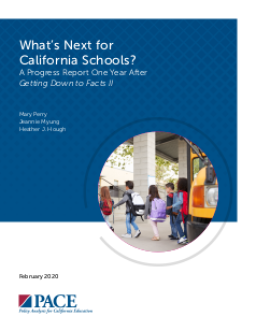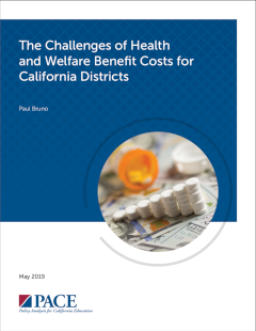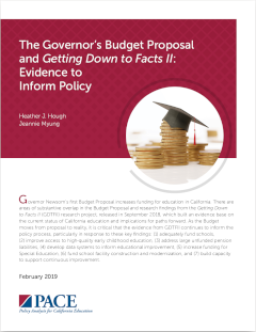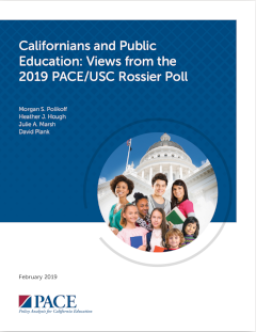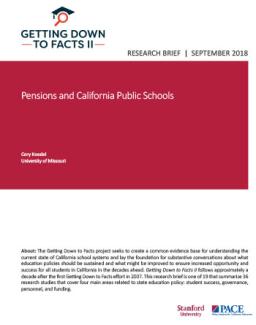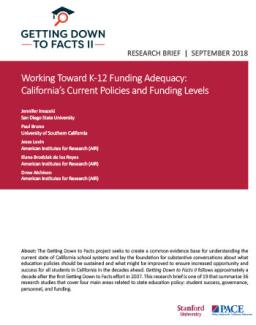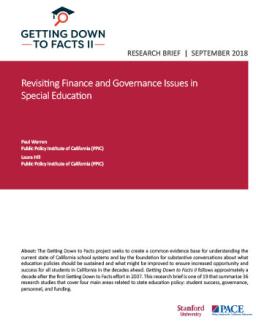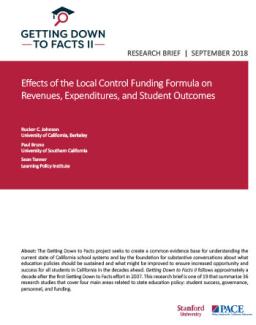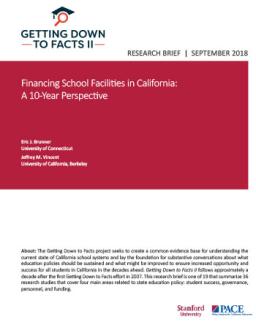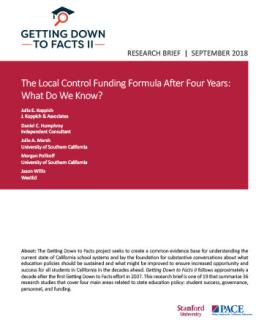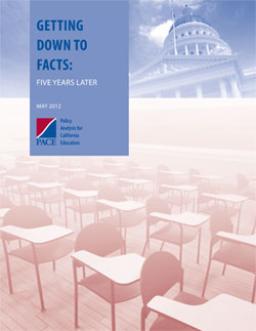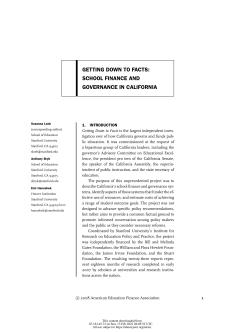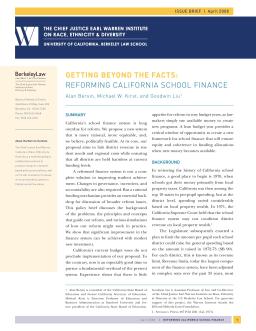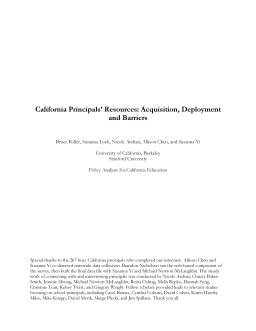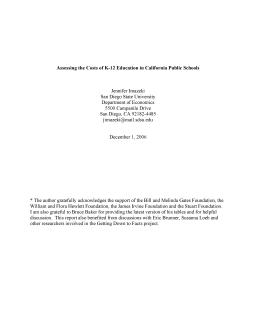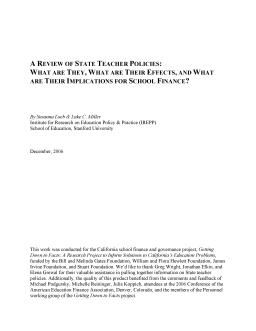Summary
The 2018 Getting Down to Facts II research project drew attention to California’s continued need to focus on the achievement gap, strengthen the capacity of educators in support of continuous improvement, and attend to both the adequacy and stability of funding for schools. Based on the nature of the issues and the progress made in 2019, some clear next steps deserve attention as 2020 unfolds.
Summary
This report highlights the challenges that California’s school districts face due to increasing employee health benefit costs, including retiree benefits. Such costs strain district budgets, making it harder to address other priorities, like increasing teacher salaries or supporting disadvantaged students. The brief suggests that districts must navigate these costs more effectively, with potential help from state policymakers, to ensure they are sustainable and not left as unfunded liabilities.
Summary
Governor Newsom’s first Budget Proposal increases funding for education in California. There are areas of substantive overlap in the Budget Proposal and research findings from the Getting Down to Facts II (GDTFII) research project, released in September 2018, which built an evidence base on the current status of California education and implications for paths forward. As the Budget moves from proposal to reality, it is critical that the evidence from GDTFII continues to inform the policy process.
Summary
Summary
The California State Teachers’ Retirement System (CalSTRS) has amassed a $107 billion "debt" due to the accrual of pension liabilities. CalSTRS contributions are legislated to nearly double by 2021. The higher rates are required through 2046, requiring significant contributions from teachers, school districts, and the state government. Solutions involve reducing benefits, increasing contribution rates, or modifying the underlying benefit structure. California could consider reforms from other states to develop its own policy response.
Summary
California's education system aims to provide all public school students with a broad course of study consistent with state standards. However, many educators feel that the state's funding system does not provide adequate resources to meet these expectations. While funding levels have improved, they remain below those of many other states. An adequacy study estimated that providing an adequate education would have required California to spend $25.6B more in 2016-17. The study also found that larger gaps between actual spending and adequate costs were associated with lower student performance.
Summary
California's Local Control Funding Formula highlights low performance of special education students. Many districts allocate more base funding for all students into special education. A study found state funding growth has not kept pace with district costs, and the current formula inadequately funds preschool programs for infants and toddlers with disabilities. The study suggests better alignment between special education and the LCFF, and improved governance and accountability structures.
Summary
California's Local Control Funding Formula (LCFF) has increased per-pupil revenues, especially for low-income districts, and provided more flexibility in expenditures, leading to improvements in student outcomes. The funding was distributed based on the proportion of disadvantaged students, and expenditure increases were primarily allocated to teachers, pensions, and special education. The policy was implemented during a time of increased K-12 funding after the Great Recession and existing revenue distribution patterns.
Summary
California's public school system has a vast inventory of buildings and properties, but many are in poor condition. The state's current school facilities funding system is criticized for not targeting aid towards districts with the greatest facility needs, resulting in a relatively regressive finance system. Local sources of funding greatly outstrip state support, and charter school facility funding continues to expand.
Summary
The Local Control Funding Formula (LCFF) shifts control of education dollars to local districts, enhancing resource allocation practices. However, inadequate base funds may constrain progress. Stakeholder engagement is evolving yet remains challenging, and school board involvement is typically modest. LCFF communication and accountability mechanisms receive mixed reviews. County offices of education have expanded their role but will need to increase their capacity. Public awareness of the LCFF lags, but it enjoys substantial support.
Summary
This report commemorates the fifth anniversary of the Getting Down to Facts project, which sought to provide a thorough and reliable analysis of the critical challenges facing California’s education system as the necessary basis for an informed discussion of policy changes aimed at improving the performance of California schools and students. The report focuses on the four key issues that received emphasis in the Getting Down to Facts studies: governance, finance, personnel, and data systems.
Summary
Summary
Summary
This report examines the fiscal and labor resources of California principals and how they acquire and utilize them to improve student performance. The authors seek to understand the background characteristics and educational goals of California principals, as well as the types of monetary, human, and informational resources they acquire and how they allocate these resources within their schools. The report also explores the support and constraints that principals experience from various actors as they attempt to acquire and deploy resources to raise student performance.
